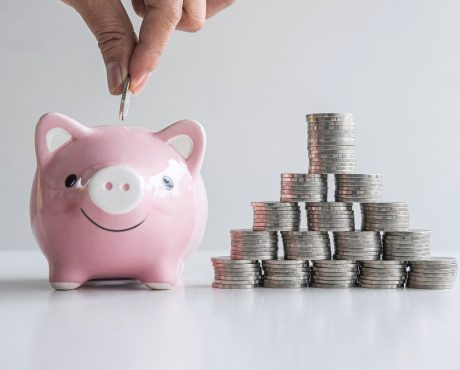Looking for Reliable Dividends? Read This
It never seems like the perfect time to load up on solid dividend stocks. Why? Because they’re always in demand, which keeps the prices up
When things are good, people may look at the more exciting growth stocks, but because dividend stocks still offer reliable payouts, their shareholders hold on to them. And when things are bad and investors enter risk-off mode, the ability to pay reliable dividends makes these stocks even more highly sought after.
In other words, it’s not easy to find bargains when looking for recession-proof dividend stocks, especially given what has happened so far this year. Due to the COVID-19 pandemic and the resulting global economic downturn, people have rushed toward safe-haven stocks that pay durable dividends.
For instance, Procter & Gamble Co (NYSE:PG), a consumer staples company that has been around for 182 years, is now trading at new highs.
Procter & Gamble Co (NYSE:PG) Stock Chart
Chart courtesy of StockCharts.com
Obviously, getting into stocks near all-time highs can seem like a risky move.
And frankly, given the uncertainties about the future and the fact that the overall market appears to be bloated, it’s hard for risk-averse investors to be buyers of anything these days.
But as I said, PG stock has always been in demand, so it was never quite cheap. And it’s certainly not the first time we’re hearing about bloated valuations in the stock market.
For instance, back in 2016, there were plenty of analysts saying the market was overvalued. And I totally agreed—no matter which metric you used, the valuation ratios were near the higher end of the historical averages. (Source: “If you follow Warren Buffett’s methodology, stocks are significantly overvalued,” CNBC, August 4, 2016.)
However, I still featured Procter & Gamble stock in my paid advisory Income for Life in November 2016. Since then, including automatic dividend reinvestment, that position has delivered a total return of 86.6%.
Back then, my reasoning was that, even though PG stock was not cheap by historical standards and it was not a particularly high yielder—the annual yield was 3.2% at the time—the company’s ability to grow its payout would result in shareholders earning higher yield on cost over time.
Indeed, investors who purchased Procter & Gamble stock back in November 2016 and kept it are now earning yield on cost of 3.8%.
Of course, PG stock is currently more expensive than before—partly due to the recent investor enthusiasm. And its yield is lower than before. With a quarterly dividend rate of $0.7907 per share and a share price of $136.93, Procter & Gamble stock has an annual dividend yield of 2.3%.
But the company’s dividend growth thesis remains intact: if an investor purchases PG stock today, they can look forward to earning higher yield on cost in the years ahead.
Procter & Gamble Co: Hard-to-Beat Track Record
You see, Procter & Gamble has one of the most impressive track records when it comes to returning cash to investors. The company has been paying uninterrupted dividends for 130 years and has raised its payout in each of the last 64 years. (Source: “Splits & Dividend History,” Procter & Gamble Co, last accessed September 29, 2020.)
And if you take a look at the company’s business, that track record should not come as a surprise. Procter & Gamble is deeply entrenched in the consumer staples industry, with well-known brands like “Gillette,” “Bounty,” “Crest,” “Oral-B,” and “Tide.” These are products that people around the world buy on a regular basis. As a result, the company can generate recurring revenues and profits, and pay a reliable dividend.
Of course, for Procter & Gamble Co to continue that dividend-hike streak, it needs a growing business. And that’s exactly what the company has.
In its fiscal year 2020, which ended June 30, Procter & Gamble generated $71.0 billion in net sales, which represented a five-percent increase from fiscal 2019. Organic sales, which excludes the impact from currency translation, acquisitions, and divestitures, rose six percent. (Source: “P&G Announces Fourth Quarter and Fiscal Year 2020 Results,” Procter & Gamble Co, July 30, 2020.)
Core earnings came in at $5.12 per share in fiscal 2020. The amount not only represented a 13% increase year-over-year, but also easily covered the company’s total dividends of approximately $3.03 per share paid for the fiscal year.
Notably, in Procter & Gamble’s fourth fiscal quarter (from April to June 2020), its organic sales rose six percent year-over-year, mainly driven by a three-percent increase in shipment volume. Core earnings per share in the fourth fiscal quarter rose five percent from a year ago to $1.16, and would have been up 11% on a constant-currency basis.
For a lot of companies, the June quarter was an extremely challenging period because of COVID-19-related lockdowns. For Procter & Gamble though, the pandemic actually led to higher demand for its household cleaning, personal health, and personal cleansing products in key markets like North America and China. The fact that the company delivered higher sales and profits in this extraordinary environment should be reassuring for its dividend investors.
Of course, there will be uncertainty going forward, but Procter & Gamble is still expected to continue traveling on a growth trajectory. For fiscal year 2021, management is targeting organic sales growth of two to four percent and core earnings per share growth of three to seven percent.
And that means, next year, the company should have no problem announcing PG stock’s 65th consecutive annual dividend increase.
